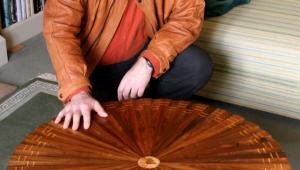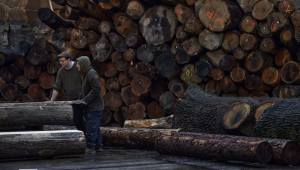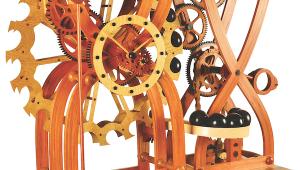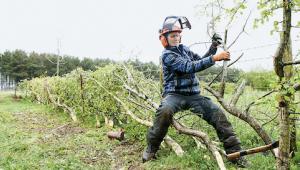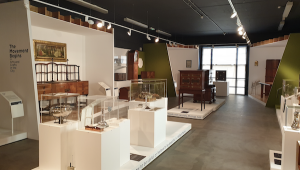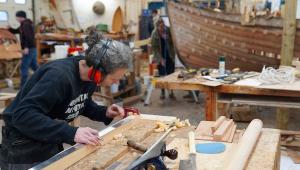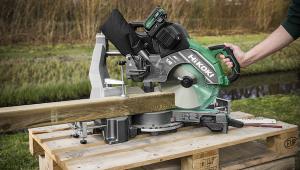New Age of Reason
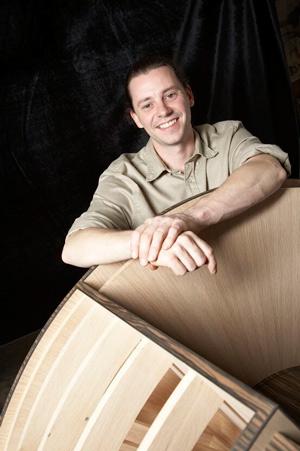
It’s Betty minus 93. The tension, however, is only barely perceptible beneath what I suspect is Peter’s habitual air of quiet and studious intensity. Instead, it’s Carl Handy — Peter’s collaborator and, to some extent, his alter ego — who paces between the benches, bristling with the static of ideas waiting to be realised.
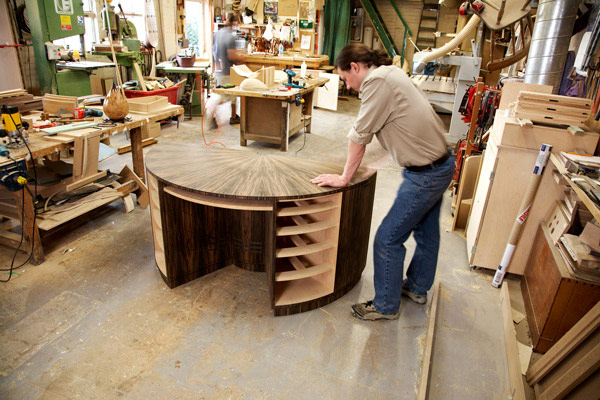
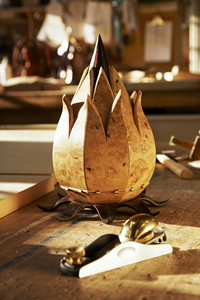
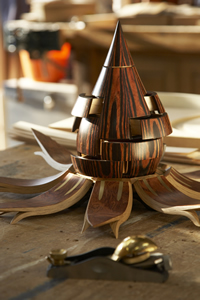
I’ll stake money that, one day, there’ll be a Rolfe retrospective, and that this jewellery box will be one of his signature pieces, not least because its fluid curving organic flower-form combines with the almost obsessive precision of Peter’s style to produce a surprising hybrid, a sort of mechanical botanical. The petals are made of oak with burr veneer on the outside, and open on brass hinges (that Peter had made, but then finished and shaped himself) to reveal a rich interior of bubinga and macassa ebony. Turn the tip of the bud, and a spindle in the core of the flower rotates, presenting magnets to the back of the maple drawers, whose backs also have concealed magnets; the like poles repel, and the draws slide open in a sudden, well...flowering! The box represents 180 hours of Peter’s time, but I’m afraid it’s too late to buy yourself a future Rolfe collectable — the box was also sold at last month’s Betty Norbury.

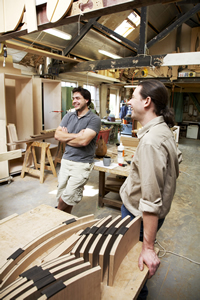
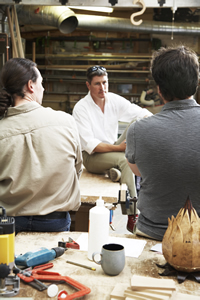

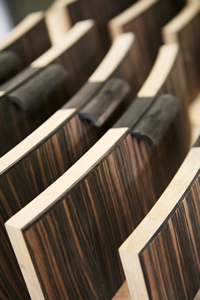
This willingness to adopt modern materials and methods is central to his very rational approach to fine cabinetmaking: unlike Carl, who talks about the melody of working wood with hand tools (see p50), Peter says that he tends to use hand tools when power tools won’t do the job. Their different approaches, however, again find common ground in a view of their craft as a type of enlightenment. For, just as the eighteenth-century Enlightenment broke the hold of the Church by rejecting its traditional ideas and values in favour of the human paradigm, so they’re using their very real abilities to kick against the secular trinity of the twenty first-century ‘Church’ – consumption, consumerism, and commercialism.
For his part, Peter is defying a society in which mass-manufacturing is better remunerated than genuine creativity: “In the small circle of my existence, creativity is important,” and for his reward he has the thrill of designing something that provokes a reaction. “What pushes me on is the feeling of appreciation; listening to people’s comments gives me a buzz.” There’s a price to be paid for creative independence, of course: “I see myself always having to work as hard as I do now. It is all-consuming, and it’s definitely not about the money — though it’d be nice to earn a living,” he adds. Is that so unrealistic? “Yes. Not once you’ve got a name, perhaps, but breaking into the market” — actually getting people to look long enough to recognise the value of his brand of fine furniture — “that’s the problem.”
And that’s where Carl comes in, bucking the tide of unreasoning consumerism. “When I’m a consumer,” he says, “I look for the things that are made with skill and care, even if it means buying second-hand.” In the same way, he wants to produce work that will make people stop and think about the skill and craft that’s embodied in the thing itself. And that’s why the impending deadline is so important; that’s why the desk has to be there when the doors of the Betty Norbury open…
The drawer was repaired, the drawers made, and after 260 hours of work the desk was finished and delivered to the show — and sold! What’s more the buyer has asked Peter to make a stool to match, and another desk has been commissioned, too. It’s even been suggested that the desk should be submitted for a guild mark – a Michelin star, if you like, conferred by the Worshipful Company of Furnituremakers. “Best of all, I got a lot of positive feedback on my design skills. I couldn’t have hoped for better!”
Find out more at www.rolfeandhandy.co.uk
- Log in or register to post comments
